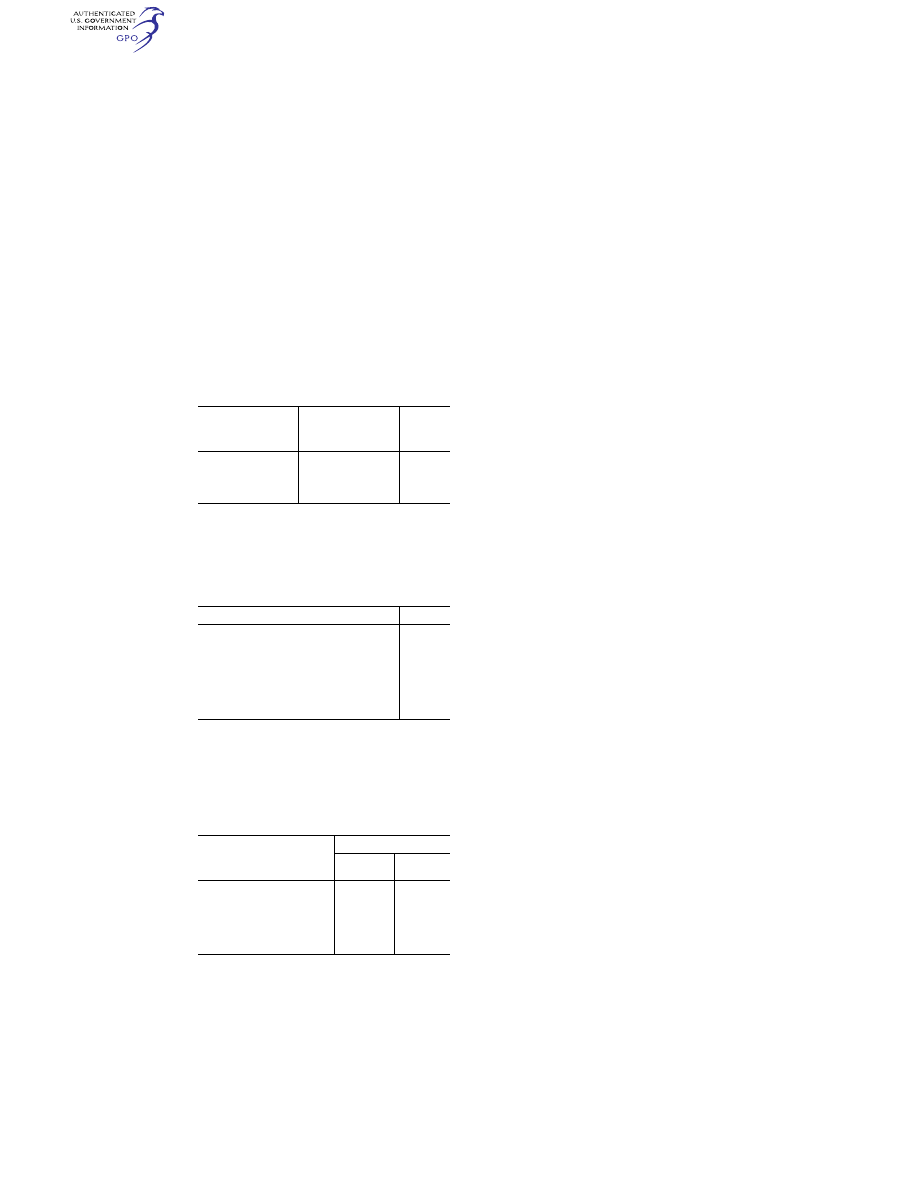
665
Federal Aviation Administration, DOT
§ 29.1401
29.1393 if the overlap intensities in rela-
tion to the main beam intensities do
not adversely affect signal clarity.
§ 29.1391
Minimum intensities in the
horizontal plane of forward and
rear position lights.
Each position light intensity must
equal or exceed the applicable values in
the following table:
Dihedral angle (light in-
cluded)
Angle from right or left
of longitudinal axis,
measured from dead
ahead
Intensity
(candles)
L and R (forward red
and green).
0
°
to 10
°
.....................
10
°
to 20
°
...................
20
°
to 110
°
.................
40
30
5
A (rear white) ..............
110
°
to 180
°
...............
20
§ 29.1393
Minimum intensities in any
vertical plane of forward and rear
position lights.
Each position light intensity must
equal or exceed the applicable values in
the following table:
Angle above or below the horizontal plane
Intensity, I
0
°
.........................................................................
1.00
0
°
to 5
°
................................................................
.90
5
°
to 10
°
..............................................................
.80
10
°
to 15
°
............................................................
.70
15
°
to 20
°
............................................................
.50
20
°
to 30
°
............................................................
.30
30
°
to 40
°
............................................................
.10
40
°
to 90
°
............................................................
.05
§ 29.1395
Maximum intensities in over-
lapping beams of forward and rear
position lights.
No position light intensity may ex-
ceed the applicable values in the fol-
lowing table, except as provided in
§ 29.1389(b)(3).
Overlaps
Maximum intensity
Area A
(candles)
Area B
(candles)
Green in dihedral angle L .........
10 1
Red in dihedral angle R ............
10 1
Green in dihedral angle A .........
5 1
Red in dihedral angle A ............
5 1
Rear white in dihedral angle L ..
5 1
Rear white in dihedral angle R
5 1
Where—
(a) Area A includes all directions in
the adjacent dihedral angle that pass
through the light source and intersect
the common boundary plane at more
than 10 degrees but less than 20 de-
grees; and
(b) Area B includes all directions in
the adjacent dihedral angle that pass
through the light source and intersect
the common boundary plane at more
than 20 degrees.
§ 29.1397
Color specifications.
Each position light color must have
the applicable International Commis-
sion on Illumination chromaticity co-
ordinates as follows:
(a)
Aviation red—
y is not greater than 0.335; and
z is not greater than 0.002.
(b)
Aviation green—
x is not greater than 0.440
¥
0.320
y;
x is not greater than y
¥
0.170; and
y is not less than 0.390
¥
0.170
x.
(c)
Aviation white—
x is not less than 0.300 and not greater than
0.540;
y is not less than x
¥
0.040 or
y
c
¥
0.010,
whichever is the smaller; and
y is not greater than x + 0.020 nor
0.636
¥
0.400
x;
Where
Y
e
is the
y coordinate of the Planck-
ian radiator for the value of
x considered.
[Doc. No. 5084, 29 FR 16150, Dec. 3, 1964, as
amended by Amdt. 29–7, 36 FR 12972, July 10,
1971]
§ 29.1399
Riding light.
(a) Each riding light required for
water operation must be installed so
that it can—
(1) Show a white light for at least
two miles at night under clear atmos-
pheric conditions; and
(2) Show a maximum practicable un-
broken light with the rotorcraft on the
water.
(b) Externally hung lights may be
used.
§ 29.1401
Anticollision light system.
(a)
General. If certification for night
operation is requested, the rotorcraft
must have an anticollision light sys-
tem that—
(1) Consists of one or more approved
anticollision lights located so that
their emitted light will not impair the
crew’s vision or detract from the con-
spicuity of the position lights; and
(2) Meets the requirements of para-
graphs (b) through (f) of this section.
(b)
Field of coverage. The system must
consist of enough lights to illuminate
VerDate Sep<11>2014
09:06 Jun 28, 2024
Jkt 262046
PO 00000
Frm 00675
Fmt 8010
Sfmt 8010
Y:\SGML\262046.XXX
262046
jspears on DSK121TN23PROD with CFR